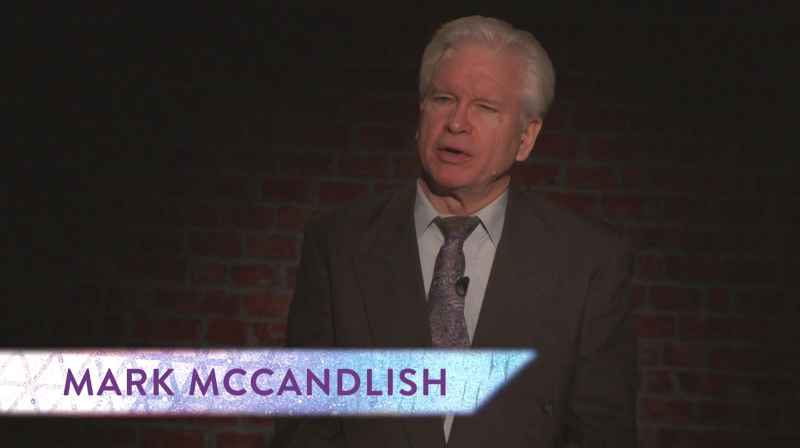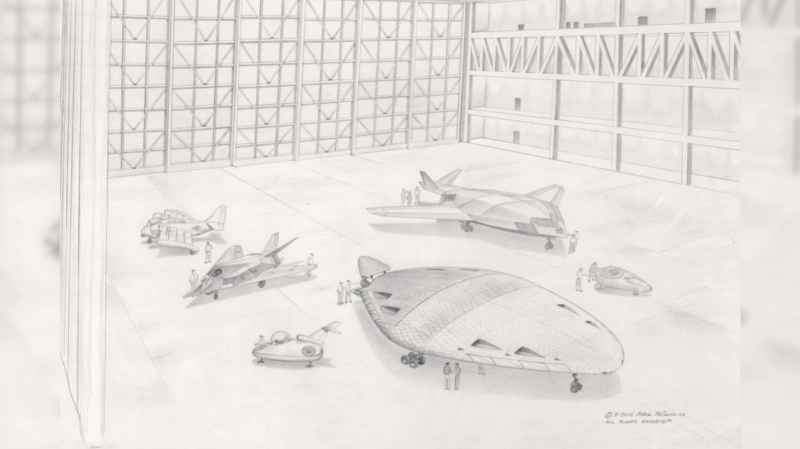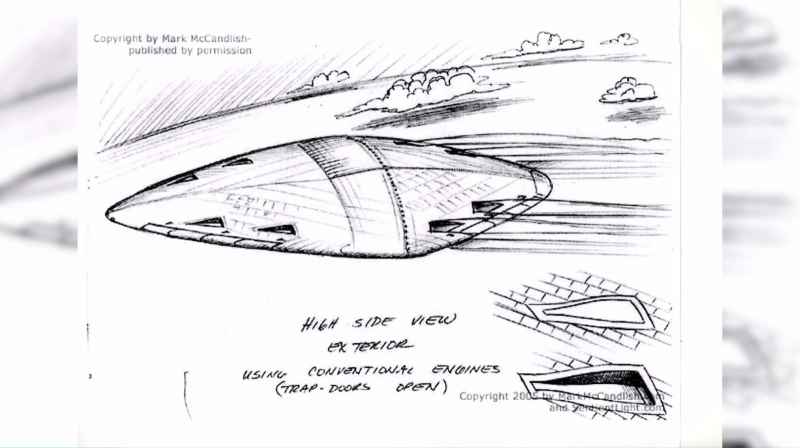Japanese translation of this transcript can be found here:
http://prepareforchange-japan.blogspot.co.uk/2017/05/CosmicDisclosure-720.html
Source: http://spherebeingalliance.com/blog/transcript-cosmic-disclosure-faster-than-light-technology-with-mark-mccandlish.html
-------------------------------------------------------------

David Wilcock: All right. Welcome back to “Cosmic Disclosure”. I'm your host, David Wilcock. I'm here with Corey Goode. So, Corey, welcome back to the show.
Corey Goode: Thank you.
David: We're going to start out now with the first of a series of interview footages from Mark McCandlish, where he's going to be talking about a particular type of propulsion system and a particular craft that one of his insider friends saw.
So without further ado, let's take a look.
* * * * * *
A TOUR OF HIDDEN TECHNOLOGY
Mark McCandlish: I get a phone call from a friend of mine that I'd known in college. For the sake of this conversation, I'll call him Brad.

So Brad calls up, and he says, “You know, I saw your article. I saw your art work, saw your name in the magazine, got a hold of the art director. He gave me your number, and this is Brad. Do you remember me?”
And I said, “Yeah. That's great.”
So we got together for lunch. We were talking, and I mentioned to him that there was an air show coming up at Norton Air Force Base, which is in San Bernardino. It's about 75 miles east of Los Angeles.
And there was a story that they might have the SR-71 Blackbird either do a flyby or that it might be on static display, which was kind of rare back then.
So we decide we were going to go to the air show. And at the last minute, the magazine called up and indicated that they were so happy with that illustration that they wanted me to do another illustration that was going to be coming out the following year in February of '89, on the X-31 program.
So they wanted it completed as a quick turnaround, and so I basically had to pass on going to the air show.
So about a week goes by, and I didn't hear anything from Brad. And I called him up, and I asked him, “Well, how did you like the air show?” But on the phone, he was very quiet.
And I said, “Well, what's wrong? You don't sound like you had a very good time at all.”
He said, “Well, I think I saw some things I wasn't supposed to see.”
And I said, “Well, how can that be? Everything that's at the air show is put there for static display for the public.”
And he says, “Well, there was another little show that happened while we were there.”
And in the beginning of this story, when this first came to me, he made it sound as though the exhibit that he was allowed to go into, the person that he had brought along, someone that we were going to network some illustration jobs for, was a high-ranking person at Lockheed Martin, and that they were going to . . . we were going to get together and talk about doing some work.
And this individual, right about the time the Thunderbird, the Air Force demonstration team, was about to start their program, he says to my friend, “Let's go over here.”
So this gentleman, my friend, a number of high-ranking politicians and high-ranking military brass, all boarded a Boeing 727, military airliner – military aircraft with passenger seats and so forth. And they departed from Norton and flew up to Air Force Plant 42, which is in Palmdale. That's where Lockheed Skunk Works is located.
So the plane rolls out. They get out of the plane, and the security detail that was around the building with a cordon and M16s, and the whole nine yards, challenged my friend because he didn't have any kind of a badge or anything like his escort did.
And so his escort essentially vouched for him, saying that he was this gentleman's aide.
So they go into the show, and as soon as they walk in, he looks around and he says, “Okay. I can see that there's some things here that I wasn't told about, things that you're not cleared to know about. So just keep your mouth shut. Don't say anything. Don't talk to anybody. We'll get out of here as soon as we can., but enjoy the show.”
So Brad indicated to me that there were high-ranking Air Force officers that were walking around like tour guides, and they were showing the various aircraft types that were on display, one of which was the first generation Aurora aircraft, what the Lockheed folks called the Pulser.


And so they had four engines that were buried in the airframe. The entire thing was covered with heat-ablative tiles, just like the Space Shuttle.
The back end of the aircraft was being used in the same way as . . . very much like the entire back end of the aircraft was like a linear aerospike engine with dozens of these fuel ejectors that would spray fuel into this supersonic shock wave and would spontaneously combust.

And the explosion of these gases would expand between the supersonic shock wave and the tapered afterbody of the aircraft and essentially pinch it – just like squeezing a wet pumpkin seed and having it shoot away out of your hands.
But the interesting thing about this particular aircraft type was that it obviously had some strategic applications, that it wasn't just for high-speed, high-altitude reconnaissance.
This was an aircraft that had weapons. And underneath the fuselage, buried in the fuselage between the engines, were 121 vertical launch tubes, each of which had a large circular heat-ablative tile on the outside that could be blown away with explosive bolts.
And what was so fascinating about this design was they kept it as simple as possible, but it was totally effective.
And they had what amounted to . . . that you could use either conventional explosive-type warhead, but they were in re-entry vehicles like the MIRVs that you see on an ICBM, except that above this MIRV in the tube, they had another heat-ablative tile with a big coiled spring behind it, all compressed.
And so as soon as they blew away the outer tile, this thing would be spit out of the tube. Another tile would come down, slam into place, and immediately restore the aerodynamic efficiency of the aircraft.
So you didn't have bomb bay doors and this kind of thing opening up when you're going at high speed.
Another one of the things that I found from recent disclosures was that when the aircraft was actually in the active functioning as a weapons platform, that it had a tertiary, a third type, of propulsion system where the back end, which was kind of flat but triangular shaped, it would open up.
It was like a clam shell on the back end, and a rocket motor would pop out, and this thing could then climb up into an exo-atmospheric launch position and loiter almost indefinitely.
This was probably one of the largest remotely-operated vehicles that's ever been in the inventory. But it did have a provision for being piloted by someone internally. But mostly, it was an unmanned aircraft.
But it could go up, and it could deploy these MIRV-type weapons from space.
* * * * * *
David: Well, for me, Corey, as an outsider who has not been in these circuits, when somebody comes forward and has this much technical detail, I'm extremely, extremely fascinated.
I've heard about the Aurora for so many years. Never have I heard the kind of detail that he just gave here.
What are your own thoughts in light of what we just saw?
Corey: Yeah, it's the amount of detail. That's what I was going to comment on.
The people that come out and talk about these things have normally just had a glimpse of them. They haven't had someone that was able to walk around and kick the tires and have a tour from Air Force personnel.
So this is very good insight on the way this craft works.
(Continue reading here)
No comments:
Post a Comment